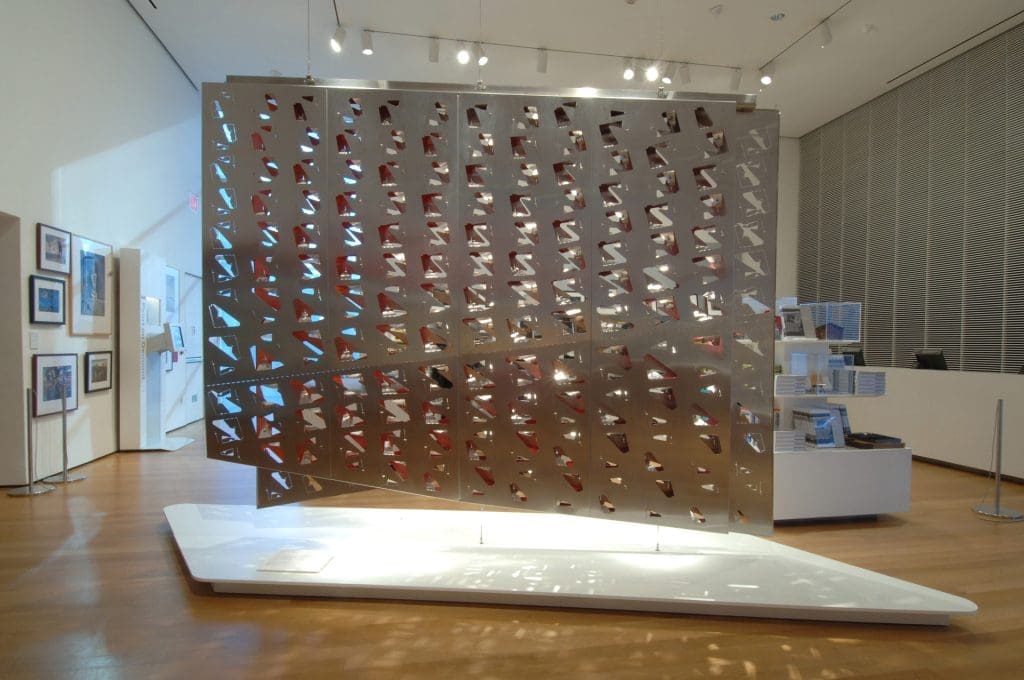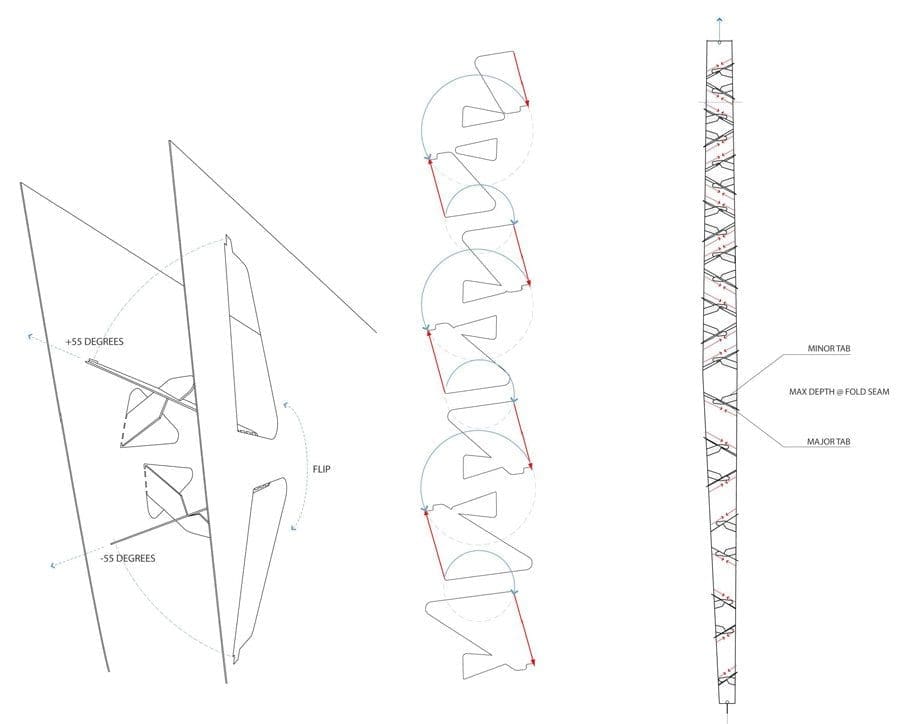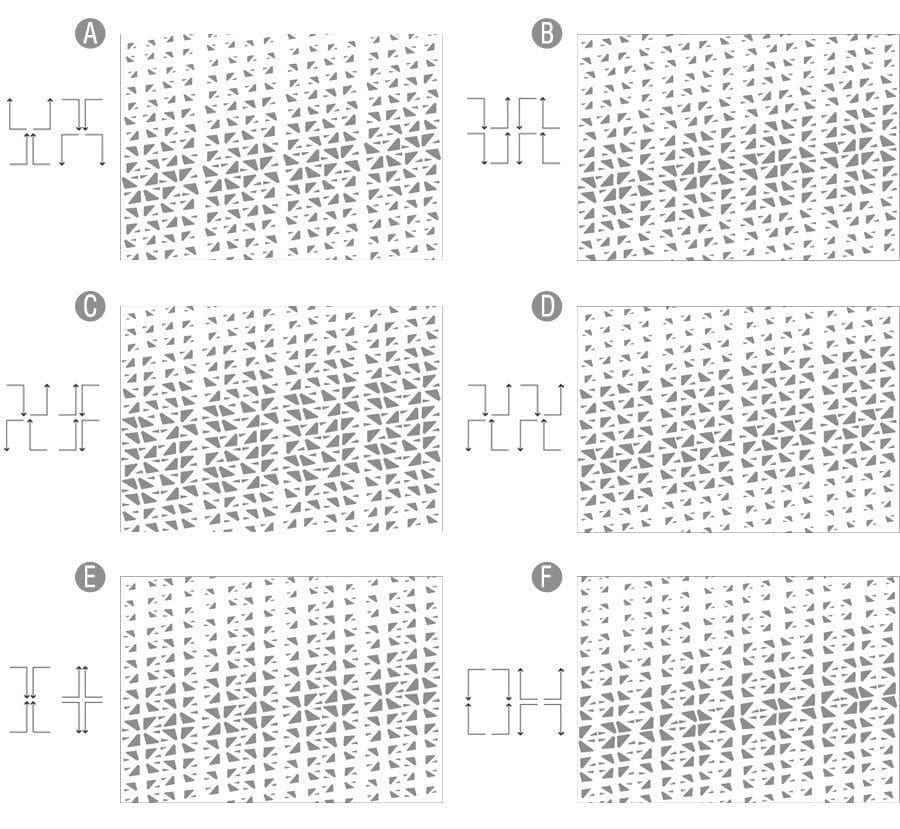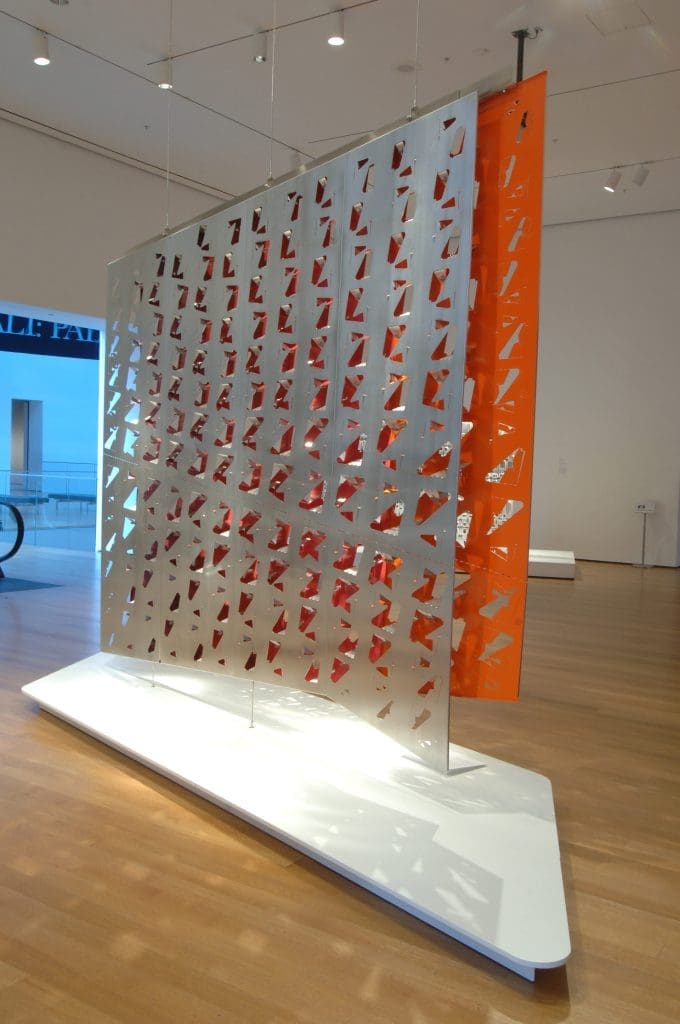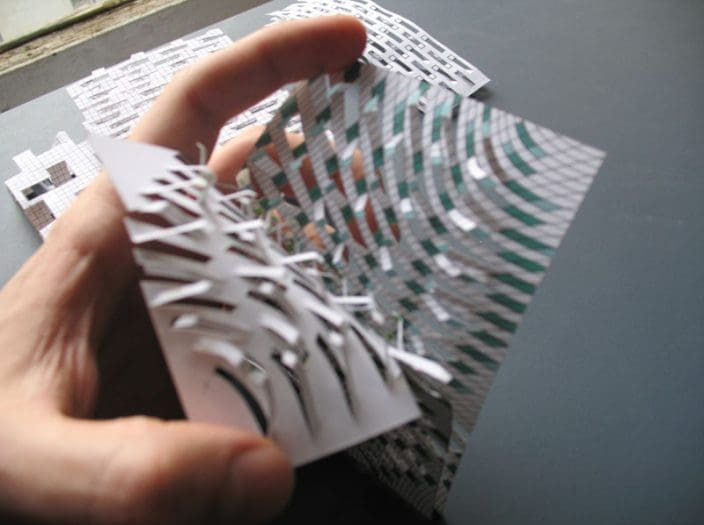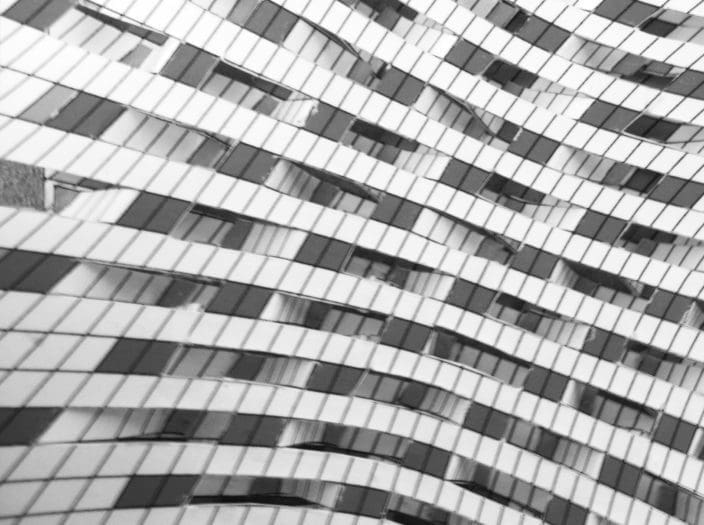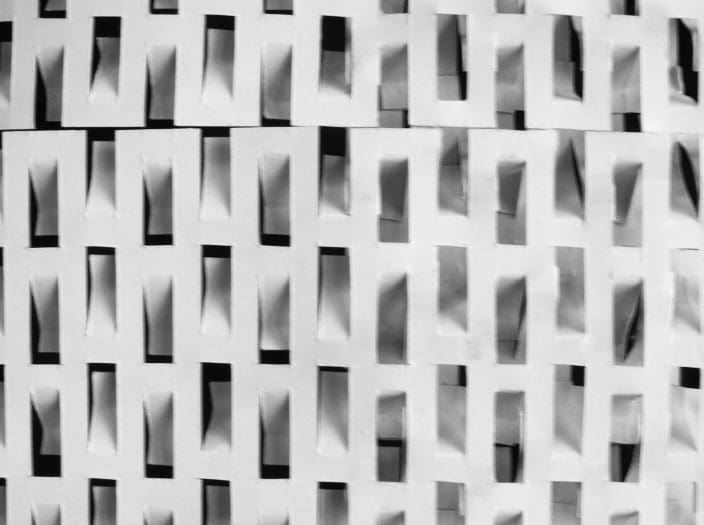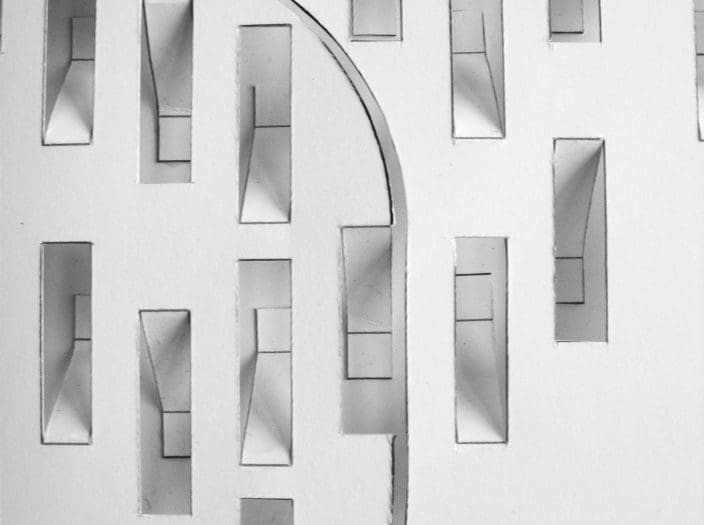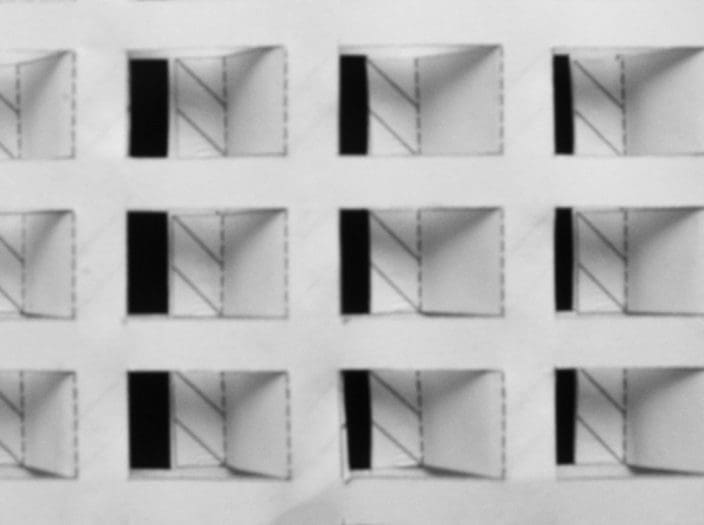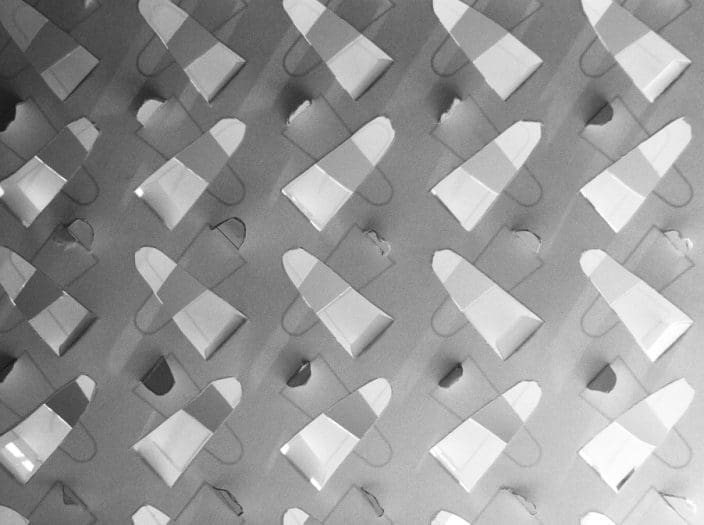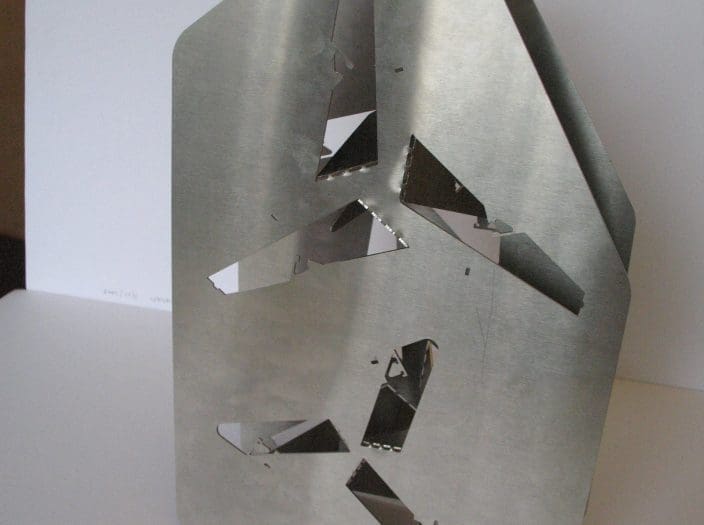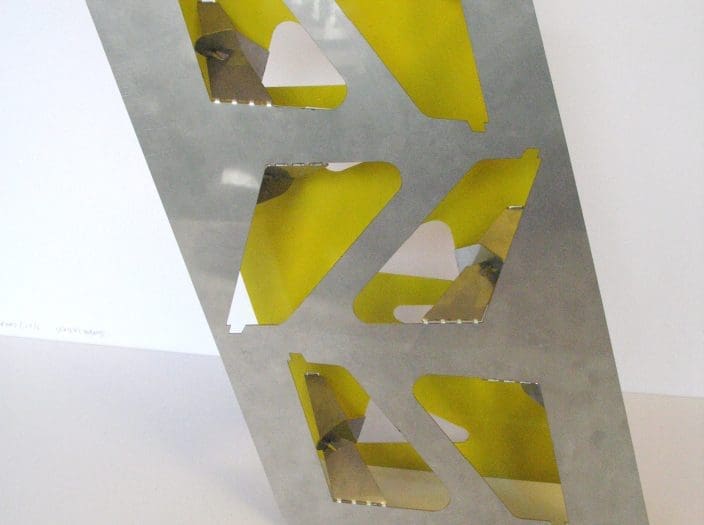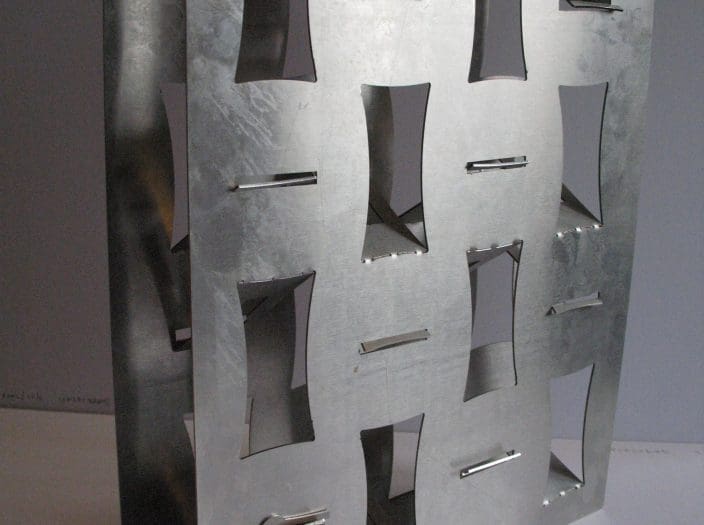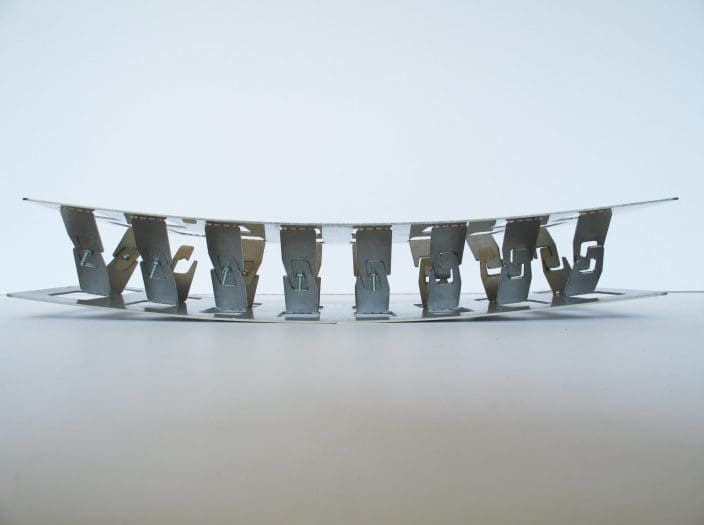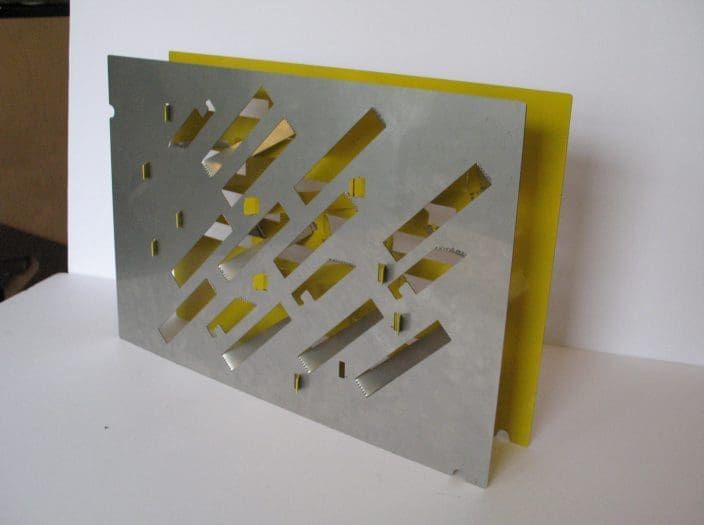Research into New Logics of Design and Assembly
Flatform
Introduction
Commissioned as part of the Museum of Modern Art’s Home Delivery: Fabricating the Modern Dwelling exhibition, Flatform is a panel system of flat stock stainless steel components that are cut, scored, and folded to form details of assembly without external fasteners. Facing panels are joined through tabs that either interlock between the two panels or extend through the face of the opposite panel. The surface geometry of each panel is parametrically linked to the characteristics of the tabs and is limited by the ability of the material to bend. The composition and number of tabs can vary to address specific performance requirements.
In contrast to the modern logic of managed assembly, in which details developed by combining standard pre-manufactured parts disconnected from the design process, Flatform has a logic of designed assembly. Flatform emphasizes the design and fabrication of performance—specific parts that structure the logic of the whole, linking concept, design, fabrication, and assembly.
The practice of architecture has always been in the paradoxical position of being invested in the production of real concrete matter, yet always working with tools of abstract representation (drawings, models, computer simulations). Techniques of dimensional or geometric representation, formerly part of an abstract process of drawing, have evolved into an integrated system of design information embedded in production and assembly processes. CNC (computer numerically controlled) systems put the process of design closer to the production of buildings, as design and production merge into a common language of digital information.
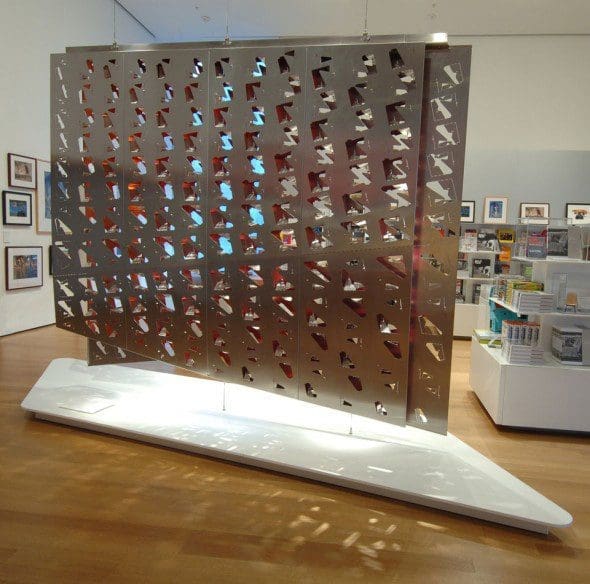
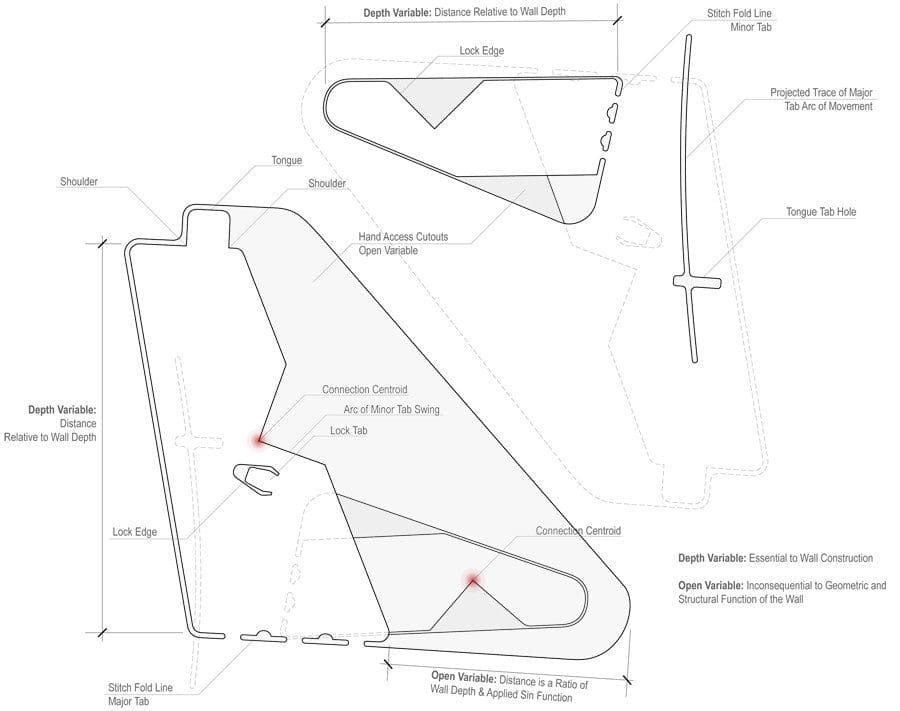
Surface Pattern: Surface = Structure
The exact dimensions and profiles for each tab set are determined from the distance and angle between the two facing flat panels. Once this relationship is determined, the connection centroid is the reference point in space from which the geometry for each tab is mathematically generated. The array and density for the tab sets make up the overall pattern and degree of openness of the assembly.
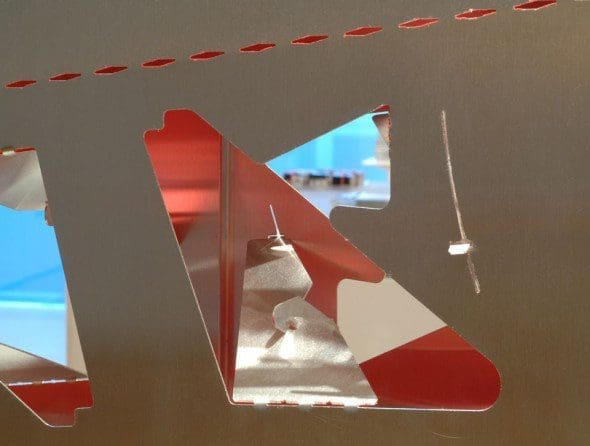

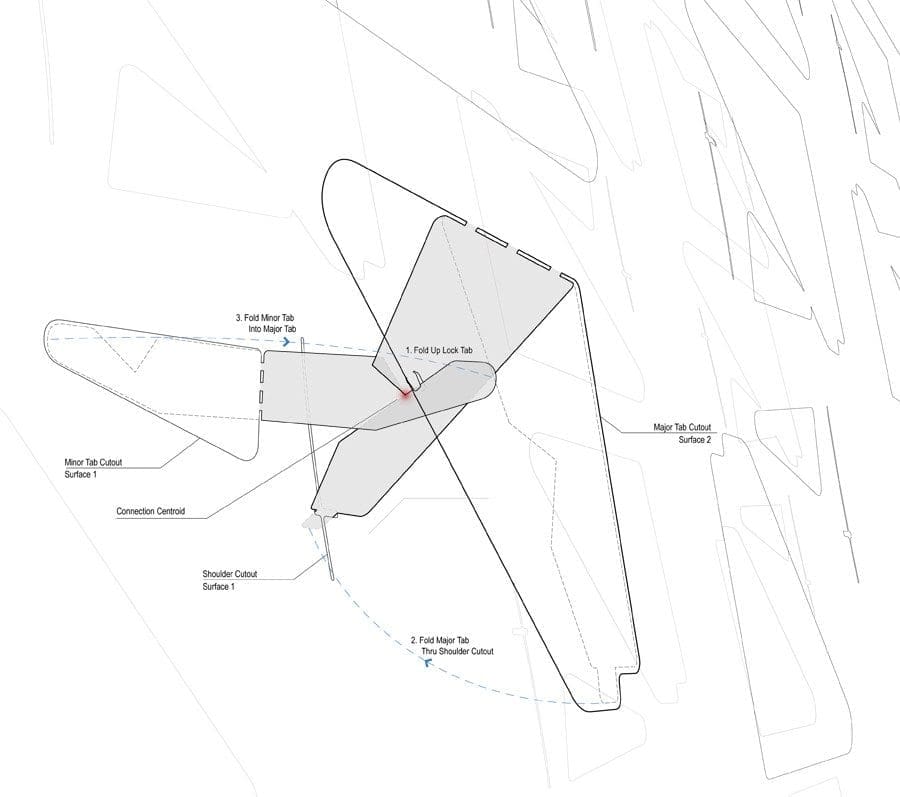
Tab Set Logic
The overall geometry and appearance of Flatform is generated from the topology of the tab set. Each tab set is made up of a major and minor tab, one on each of the facing flat panels, in a precise relationship to each other, that bend and structurally lock together.


Open Variable
The variable width of the tab openings, parametrically linked to the overall geometry of the wall itself, allows the wall system to accommodate a wide range of transparency and opacity.
Depth Variable
The global geometry of the facing panels is the primary design variable that controls the pattern of tab sets. As the panels move further apart, the tab sets reduce in number, grow in length and produce a more open affect. As they move closer together, the opposite occurs.
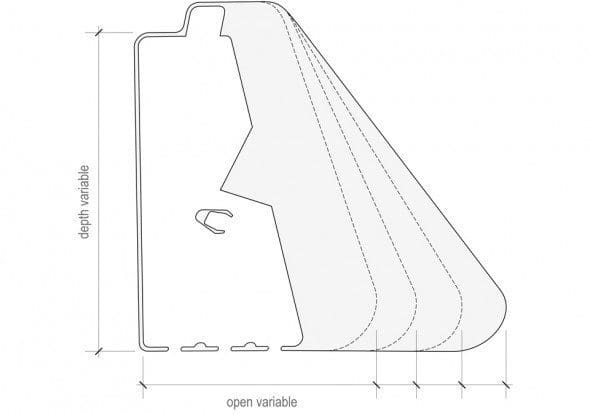

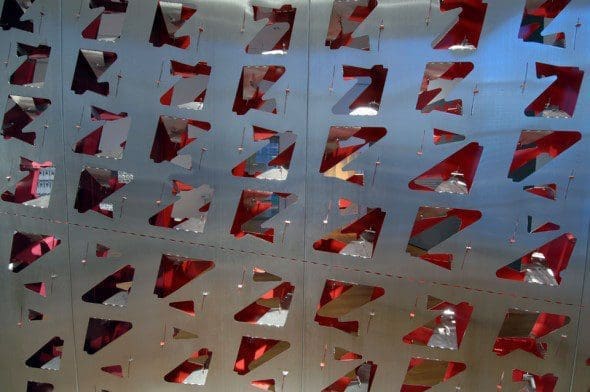

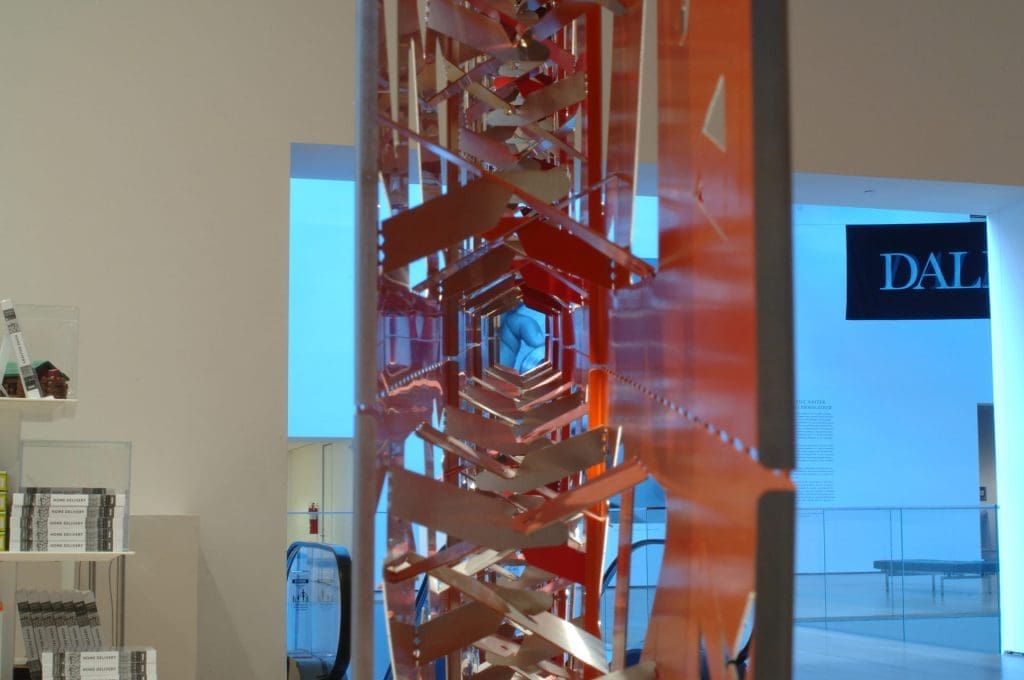
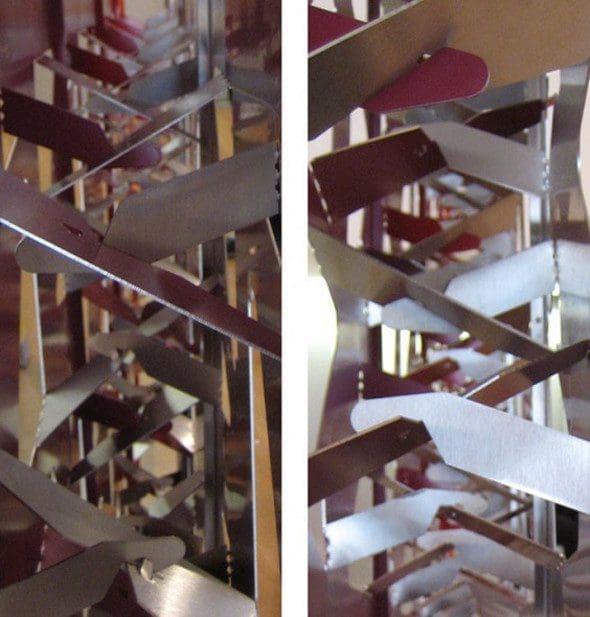
Flatpacking
The prefabricated components are delivered to the installation site as flat panels, reducing transport costs and increasing the ease of handling on the site.
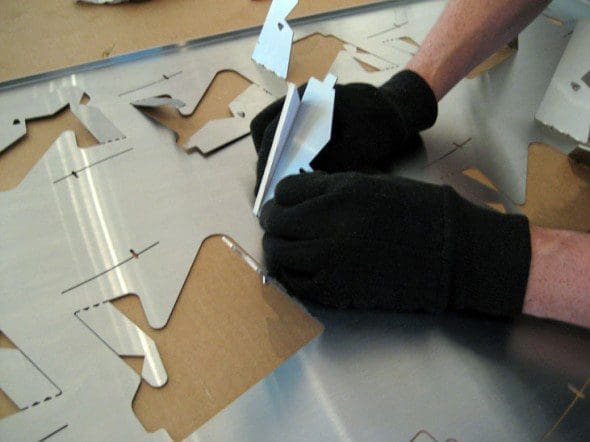
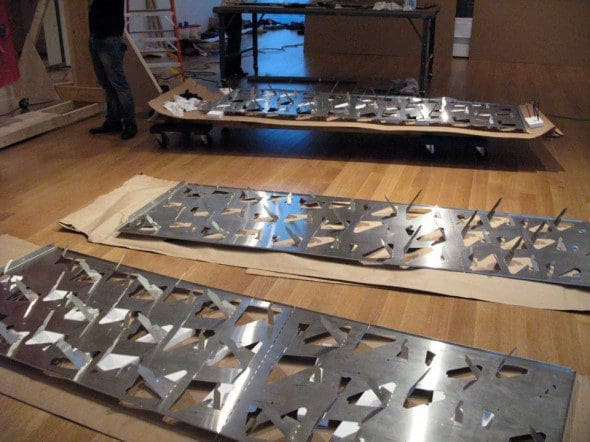
1. Bend lock tabs and major tabs
2. Hang panel
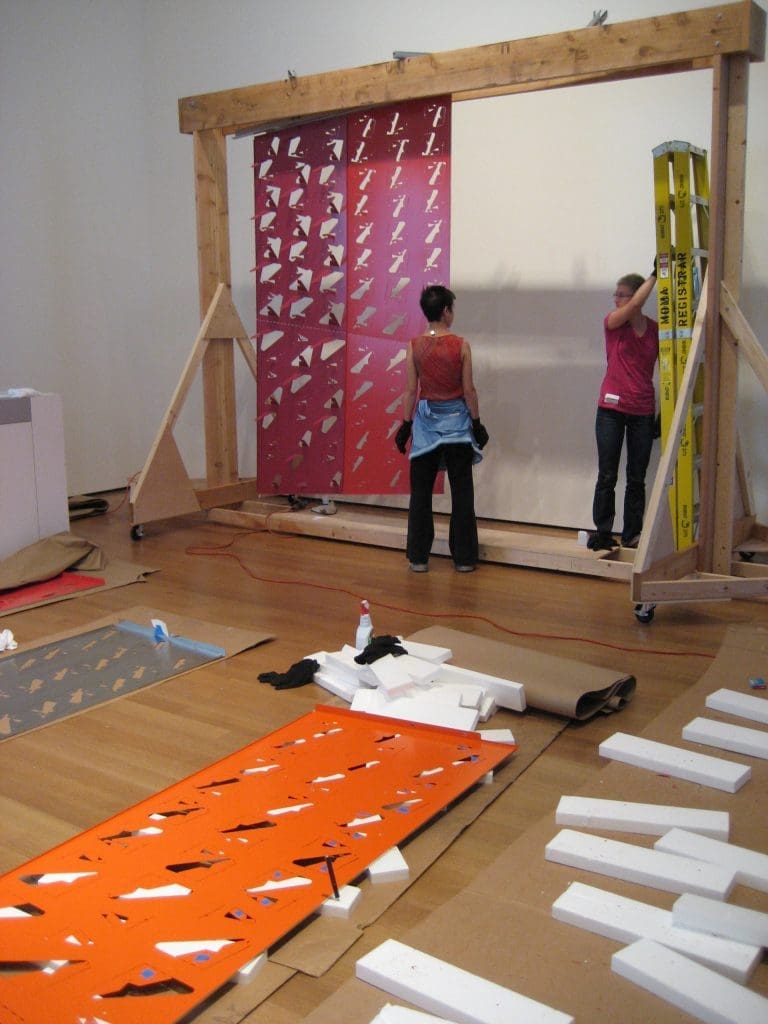
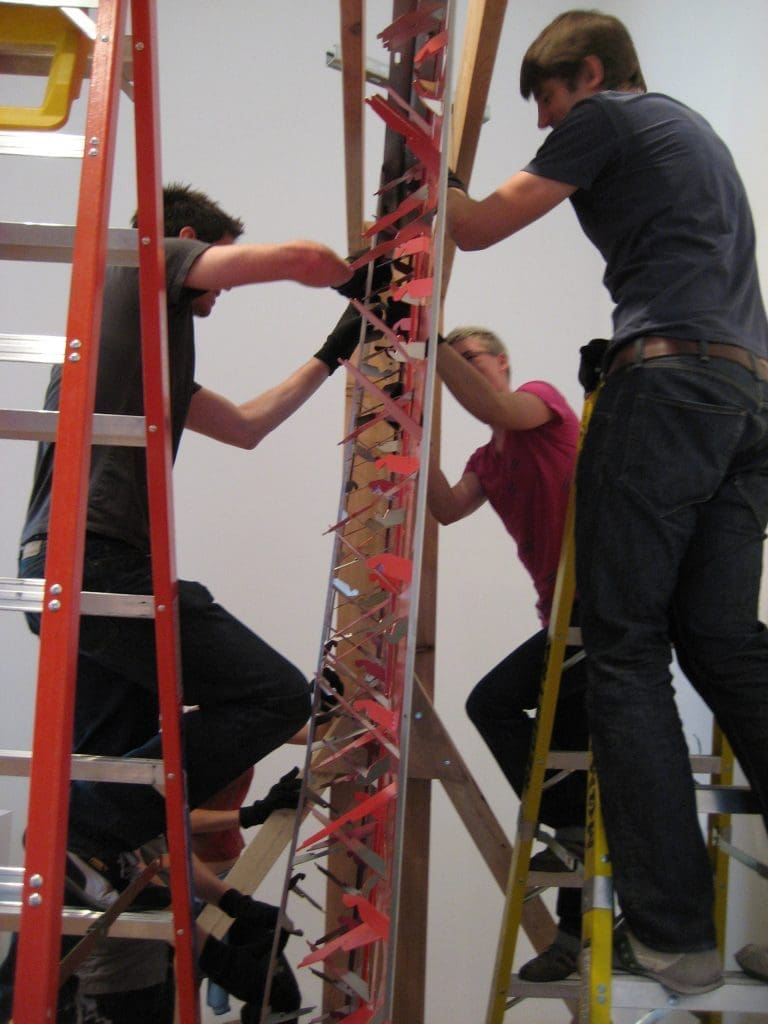
Paper Studies
Prototypes
Material Effects
The inside surface of the facing panels on one side is powder-coated, and the surface quality of the polished stainless steel is utilized to create reflected color on the inside of the assembly. The color also accentuates the three dimensional quality of the tab sets.
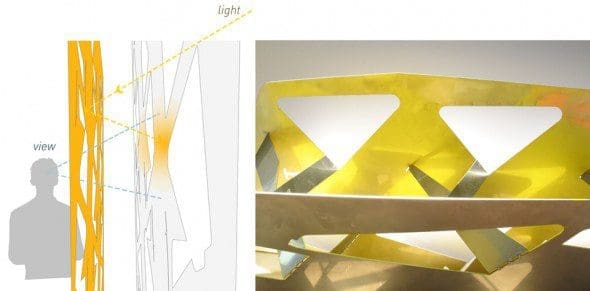
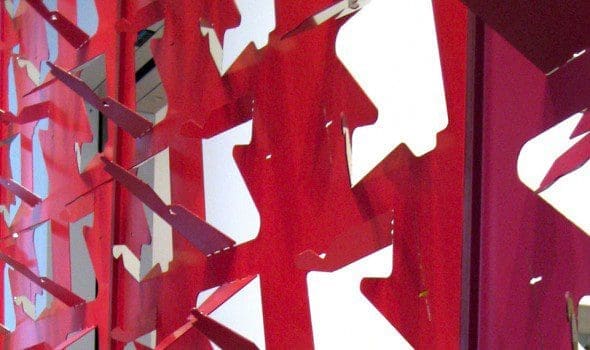

Surface Pattern: Tab Rotation
Architectural details are largely a product of the relationship of design to industry. If the modernist detail was based on negotiating tolerances (differences) between pre-manufactured, standardized building components through separate systems of fastening, today we are shifting to methods of production that are based on the management and organization of information, where details, tolerances, and assembly logics are numerically controlled and fully integrated during design. In this context, CNC (computer numerically controlled) systems bring the process of design closer to the production of buildings, merging them through a common language of digital information.
